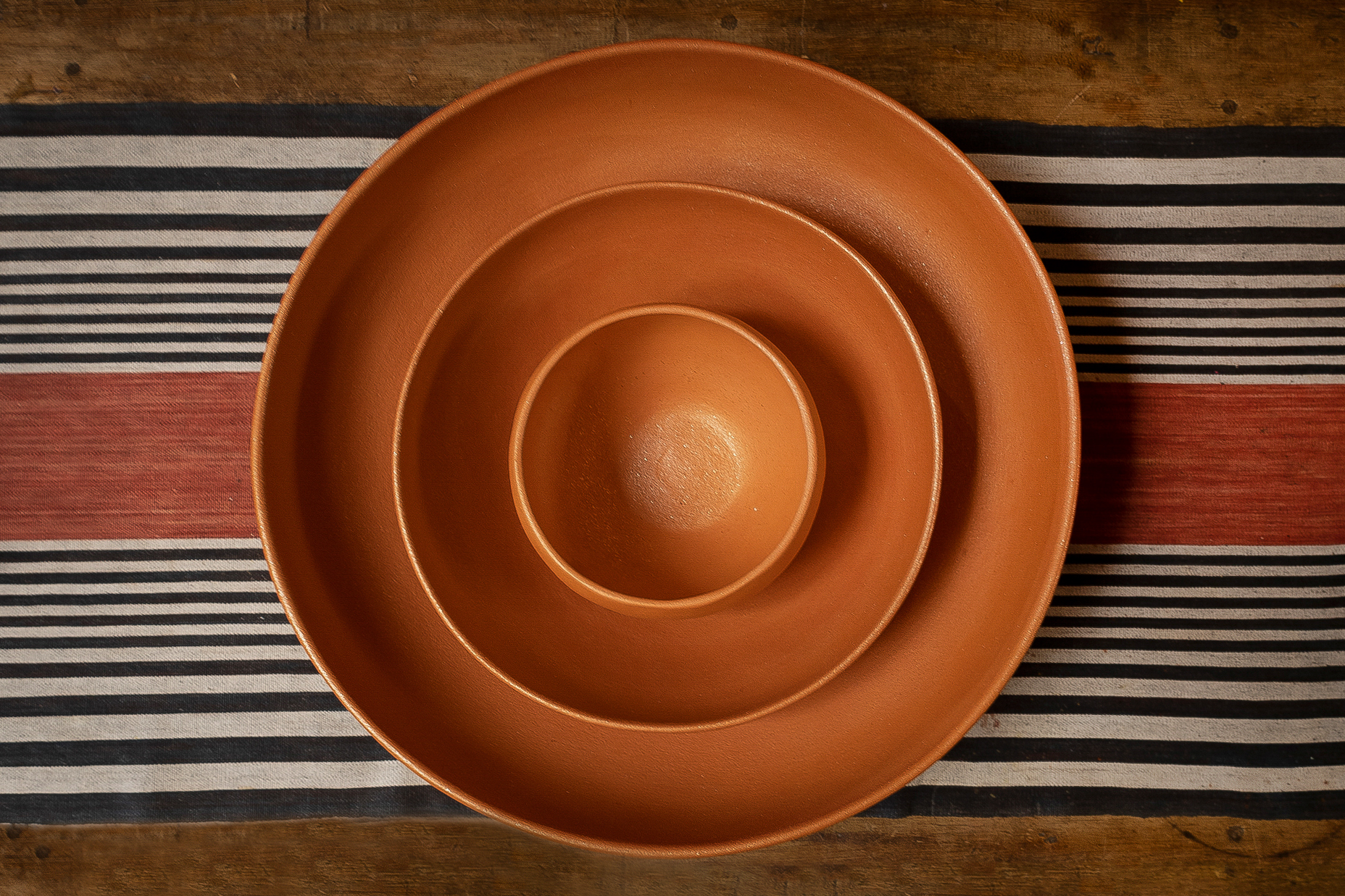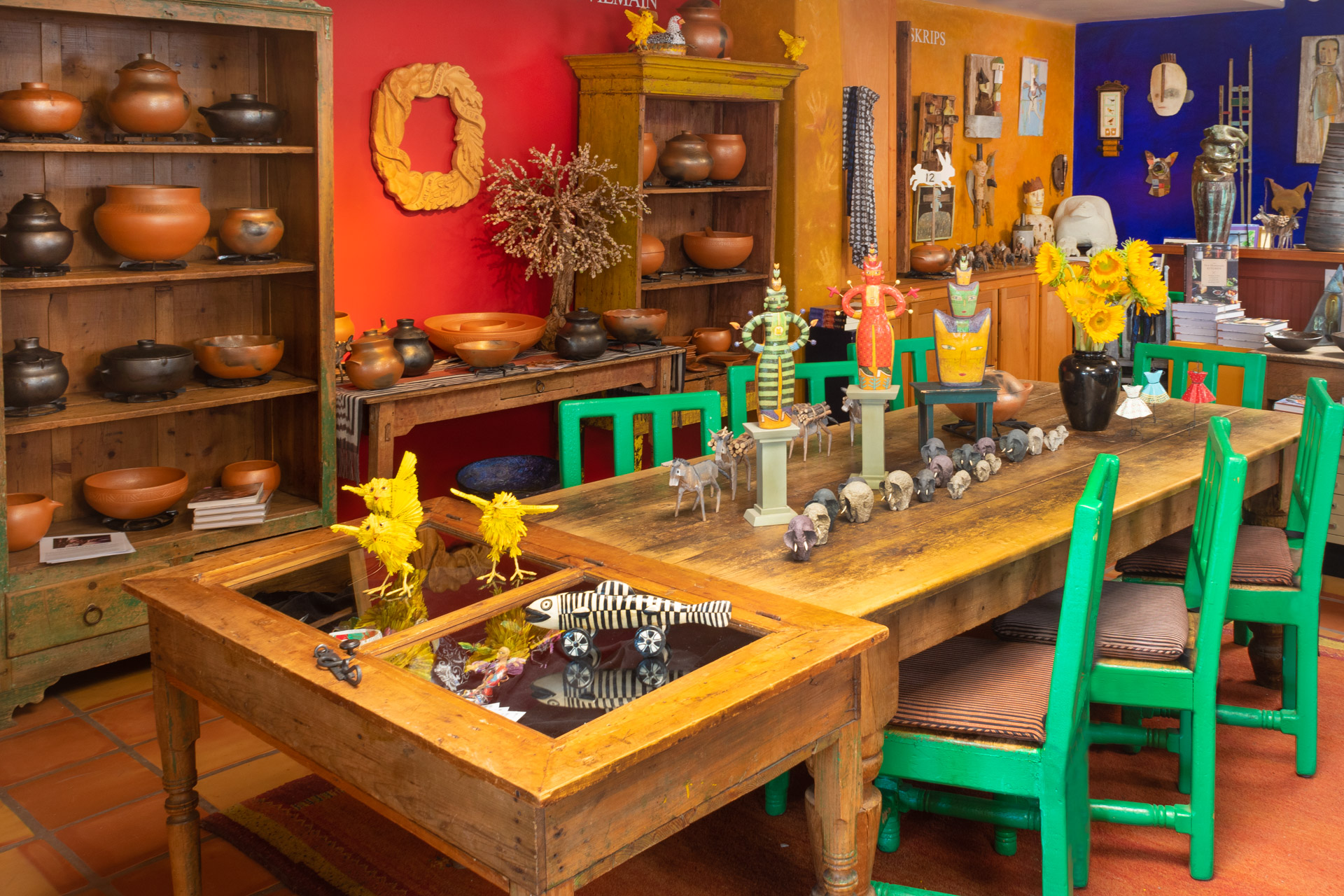- Art Gallery Home
- Beadwork
- Books
- Lithography
- Photography
- Wood Carving
- Jewelry
- Mica
- Paper Mache
- Ceramics
- Painting
- Assemblage
- Glass
- Metal Sculpture
- Artists
- Gretchen Overman Kathryn Walker Art JT Beggs Alfred Blea Gina Telcocci Warp Zone Weaving Irene Aguilar Rhonda Avidon Jean Boutruche Mary Buck Harlan W. Butt Robin Butt Andrea Byers Dave Campbell Clarence Cruz Laura Dean Sarah Grenzeback Katharine Kagel Orion Langdon Kitty Leaken Bonnie Lynch Leovigildo Martinez Lorenzo Mendez Camille Moss Walter W. Nelson Chris Olson Lee Onstott David Parsons George Payapilly Rick Phelps Bill Skrips Lisa Smith Romig Streeter Emily Swantner Penny Truitt Suzanne Vilmain
please check back.
Would you like to be notified when their work comes back in?
Let us know by sending an email to us at [email protected]
Bonnie Lynch hand builds her vessels with thick coils of coarse clay followed by measured steps of shaping and using a 40 year old wooden paddle to achieve thin walls and smoothed surfaces.
Coiling vessels is a slow, meticulous process that involves waiting for the clay to lose moisture before one can continue to build. For this reason Lynch usually works in sets of 3 – 5 large vessels being constructed at the same time, moving from one to the other as the clay sets up and holds its shape.
The pieces are carefully dried over 6 – 8 weeks.
Once the clay is “bone dry” it goes through an initial bisque firing that solidifies the vessel and sets the physical strength of the clay. After this stage the pieces are completely white and ready for the second, smoke firing.
The second “saggar” firing is at a lower temperature than the first. Saggar is pronounced “sag are”. It is a smoke firing that involves loading the vessel in a gas kiln, within a container (the saggar) and filling it with combustible materials. These include sawdust, manure, pine needles and pecan shells.
Saggar firing originated in Japan hundreds of years ago. Firing the combustibles around the vessel inside a container, inside the kiln creates an oxygen reduced environment that yields beautiful blacks, soft greys and iridescent silver marks. These marks are not under the artist’s control, the fire decides what the results are.
Lynch has always preferred a more raw, natural finish to these clay forms as opposed to the smooth glossy finishes achieved with glazes. The quality of the clay surface shows the artist’s hand and the organic nature of the clay itself, earth.
Artist’s Statement:
Beauty as an invitation to stillness may come at any moment. Whether arrested by the perfection of a Darkling beetle or the clarity of a perfect aria, beauty has the capacity to suspend the moment. Layering clay is like this. I am interested in beauty, in the simplicity
of form, and in the processes of stillness.
Early in my work I was drawn to the vessel. As ancient as earth
itself, the vessel requires a quiet, focused attention to build. And importantly, through its essential nature I am able to experience space as an undeniable material unto itself, where the volume of silence surrounding the form and that held within is integral to each work.
The large forms I place directly on the ground alter their space as well as our relationship to that space when we move around them. It is this tangibility, the making aware of oneself through form and volume, and the space we occupy, that I return to again and again. Vessel and volume, earth and air given up to the determination of fire, bring me to the place of beauty and stillness we inherently recognize.




